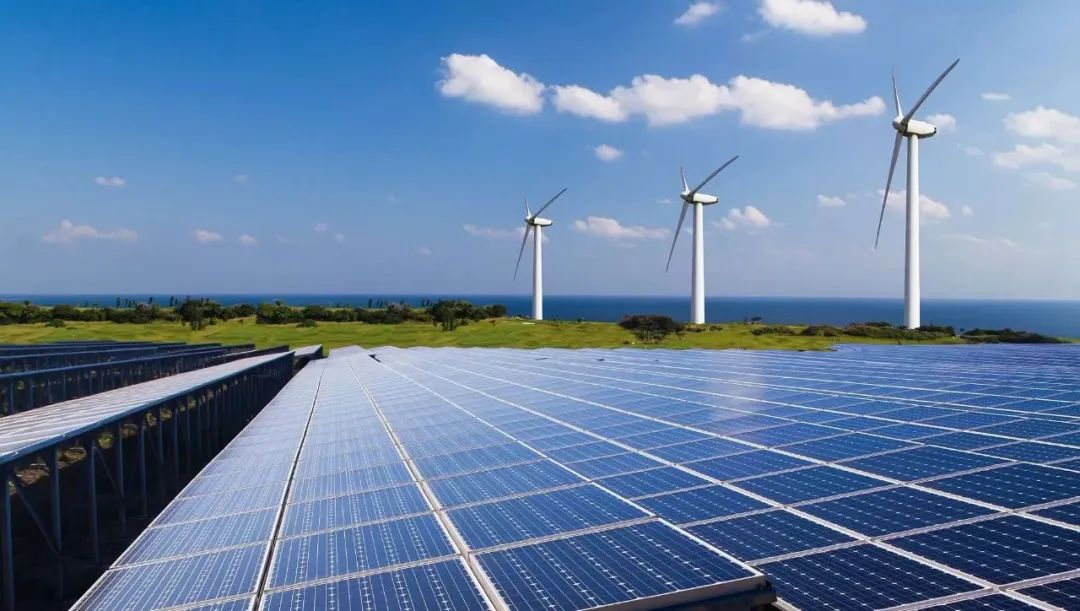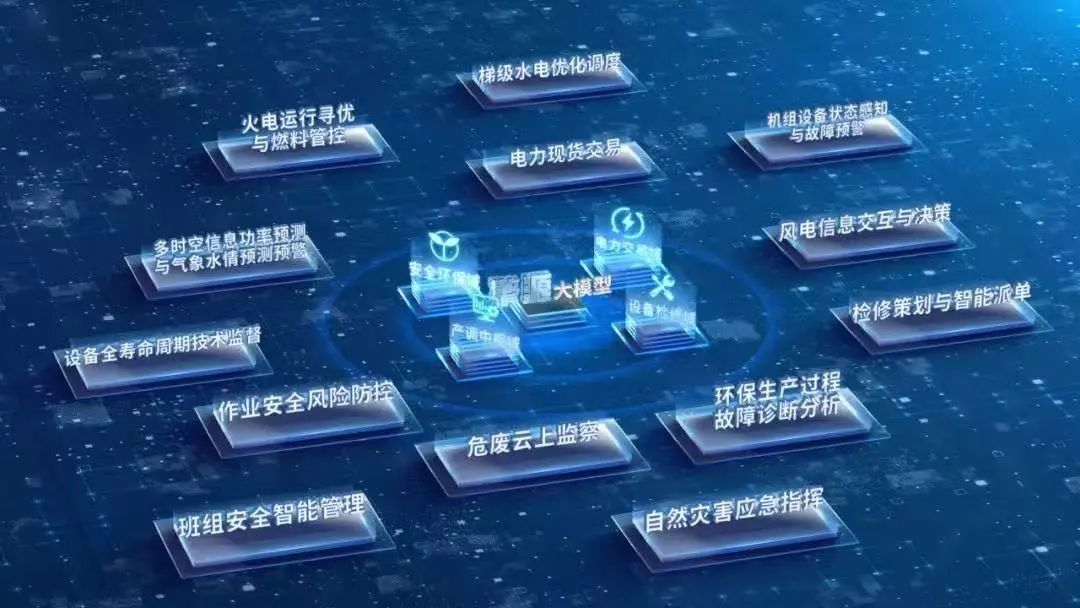AI Big Models: Can Energy Systems Mirror Autonomous Driving's Success?
![]() 08/25 2025
08/25 2025
![]() 552
552

Author|Lin Feixue
Editor|Zhang Qi
Operation|Chen Jiahui
Produced by|Lingtai LT
Header Image|Publicly available image from the internet
Autonomous driving isn't about constructing vehicles; it's about training a brain capable of comprehending the world. Similarly, the intelligence of energy systems transcends equipment stacking; it involves crafting a "digital intelligence entity" that senses, weighs options, and decides autonomously.
Fundamentally, both pursuits tread the same path, empowering large models to grasp language and govern reality.
Yet, in the energy sector, a silent revolution brews. The primary arena isn't coal, photovoltaics, or wind power; it's algorithms, models, and intelligent agents. It's no longer human dispatchers who control the grid but energy AI that comprehends physics, strategizes, and evolves.
So, who mentors these energy big models? Can they attain "autonomous decision-making" in complex environments akin to autonomous driving?
Is it viable to train the power grid akin to training a large model?
According to Tianyancha's latest comprehensive data, China's power system is projected to reach 2 billion kilowatts by 2030.
At this juncture, AI isn't merely a supplementary tool; it's the "nerve center" of the entire grid. It precisely tracks load fluctuations, monitors wind and solar power output, and strategically deploys energy storage and hydropower, managing the entire electricity lifecycle—generation, transmission, distribution, and consumption—in an integrated manner.
Faced with peak electricity demand and low power output fluctuations, it swiftly weighs options, makes judgments, and mobilizes resources within milliseconds, truly relying on AI for power dispatch.
The protagonist of the new power system has shifted.
In 2025, energy industry big models are emerging in clusters, not merely for show but for practical implementation.
On June 28, China Energy Investment Corporation unveiled "Qingyuan," the world's first trillion-level power generation industry big model. Covering thermal, hydroelectric, and wind power lines, it vertically integrates 75 scenarios like equipment maintenance, power trading, and safety management, deploying over 41 intelligent agents.

▲ Picture: The world's first trillion-level power generation industry big model "Qingyuan" is released
Additionally, China Southern Power Grid introduced "DaWatt·YuDian," an intelligent simulation big model for power systems. It compresses large power grid operation simulations, traditionally requiring days of computation, to "second-level responses," empowering AI in dispatch optimization, accident analysis, and power planning.
Previously, the power system wholly relied on human effort. Dispatchers balanced loads based on experience, engineers inspected equipment through sound and temperature, and traders relied on intuition for bidding. Today, models, learning faster than humans, are "taking over" these tasks.
How does it work?
The key lies in "hierarchical modeling." At the base level, an L0 general brain reads images, understands semantics, and recognizes trends, laying the groundwork for global dispatch. Ascending, L1 to L3 refine models for thermal, wind, nuclear power, etc., learning to predict power, adjust equipment, and ensure safety.
We're no longer training a tool but nurturing a "super brain" that comprehends the entire energy system. Behind each unit of electricity is no longer a human decision but an AI choice after countless cost-benefit analyses. This isn't a technological upgrade but an evolution of energy system wisdom.
For instance, on a wind farm turbine, "Qingyuan" accesses real-time vibration and temperature signals to automatically determine blade fatigue and potential breakage. In the dispatch center, the big model integrates meteorology, hydrology, and load change data to generate optimal power generation, transmission, and distribution combinations.
Of course, this intelligence isn't solely driven by a few experts but by a reshaped industrial chain. Take the "Qingyuan" model; it connects the world's largest installed capacity, trillions of data assets, a thousand-person AI team, and over a hundred validated business scenarios.
People may underestimate this transformation's scale, akin to not anticipating a mobile phone integrating cameras, MP3 players, telephones, and game consoles.
Now, no one dares believe an AI model can simultaneously handle dispatch, trading, load forecasting, and equipment maintenance.
But it's here. Energy big models integrate these functions, akin to autonomous driving, transforming fragmented systems into a self-thinking whole.
This isn't an auxiliary tool but a reconstruction of cognitive methods.
Behind every decision, the model "weighs the costs."
AI's primary challenge in the energy sector is tackling complex decision-making amidst change.
In February 2025, the National Development and Reform Commission and National Energy Administration jointly issued Document No. 136, marking new energy's official market entry. Fixed electricity prices and full guarantees for new energy assets were abolished, and they began facing market competition, requiring independent participation in multi-level power markets like spot, medium- and long-term, and ancillary services.
This isn't a simple mechanism change. Behind it, no decision is straightforward. Every order, transaction, and curve may impact profits or even development. If previously it was a competition of station numbers and resource quality, today it's about the system's real-time cost-benefit analysis. AI has become the core player in building risk control closed loops amidst complexity and uncertainty.
AI can generate real-time dynamic reports for multiple scenarios and make instant judgments on position liquidation or hedging, showcasing its capabilities, not to mention real-time access to power station output, market node prices, equipment status, and meteorological information.
This mechanism's establishment relies on full-chain integration between SCADA (Supervisory Control and Data Acquisition) systems, trading algorithm systems, and risk engines. The future energy trader might not be the one who understands the market best but the one who trusts the model most.

AI integrates meteorology, water conditions, equipment status, and market prices into a unified decision-making system, transforming human intuition-based judgments, like deal profitability or equipment stabilization, into mathematical modeling and strategy optimization.
It knows bidding low now might be futile and that waiting two hours might yield greater profits. Thus, it no longer blindly pursues "speed" but "profitability."
In equipment maintenance, the big model suggests, "This bearing can last another 28 hours but has an 80% chance of minor anomalies beyond that," preemptively addressing issues rather than waiting for failures.
In dispatch operations, AI isn't just an auxiliary reference but actively suggests or even executes automatically.
Intelligent simulation models like "DaWatt·YuDian" run tens of millions of data simulations in seconds, predicting safety risks, load balancing, and economic costs of different dispatch schemes.
According to Tianyancha's comprehensive information, the model relies on scientific decision-making derived from massive data deduction, multiple verifications, and continuous feedback. For instance, in new energy power forecasting, AI models integrate time series modeling, deep learning, and physical fusion modeling, even incorporating prior knowledge, enabling the model to foresee dusty weather affecting photovoltaic efficiency and wind shear disrupting wind power output.
The model weighs not just electricity bills and efficiency but also safety, sustainability, and user experience.
This marks the energy system's entry into the era of intelligent decision-making.
The competition for the energy brain is a new battleground for AI's "new infrastructure."
If past big model competitions focused on creating the most human-like general AI, the energy industry's big model competition has shifted dimensions.
Who can create "dispatch rights" for the industry? Who can win the "right to think" in the energy system?
This is a genuinely new infrastructure competition.
Media reports from Tianyancha indicate today's big models aren't just smart brains in a corpus but the central control brains of the entire energy system. It's not about eloquence but accurate calculation, effective adjustment, and cost savings. Whoever possesses such an energy brain will dictate the industry's future.
And whoever writes this "new protocol" first will master it. Remember, big models' rapid pace is fueled by a combination of computing power, data, and algorithms. The energy industry has a natural advantage: an ultra-large-scale, highly complex, and deeply closed-loop data system.
A national-level energy group's data structure is inherently an AI experimental field.
Thus, the essence of the energy brain isn't about model speed or output accuracy but mastering a set of modeling paradigms and operational models. This is the underlying control power and algorithmic dominance of future energy systems.
Moreover, technology defines scenarios, and scenarios nurture standards.
Once a company leads in running through 50+ scenarios, deploying hundreds of intelligent agents, and achieving real-time dispatch closed loops, it may set future industry reference standards. This first-mover advantage eventually evolves into algorithm framework rule-building.
It's not about building factories or towers but algorithms, standards, and protocols.
Certainly, the energy system won't lack electricity in the future but "smart electricity."
Just as autonomous driving isn't about the car's engine but who controls the perception, decision-making, and execution system closed loop, the future energy system's core isn't generation or supply quantity but who understands better adjustment, savings, and coordination.
Whoever trains the next energy super big model will construct a higher-dimensional energy order.
And this marks big models' true entry into productivity's core.
So, what's the endgame?
It's where every power plant, photovoltaic panel, and wind turbine connects to a thinking energy network, not information islands. Where intelligent dispatch, operation and maintenance, trading, and safety run in parallel, with humans posing questions and AI providing answers at any time. Where energy AI becomes infrastructure, like water, electricity, and road networks.
Compared to autonomous driving's rapid pace, these trials are deeper and slower. Each judgment must justify the entire grid's stability.
If the first AI wave was about understanding language, the second might be about understanding energy. What's truly fascinating is when embedded in the entire energy network, AI may not just answer but proactively support cities' brightness through an intelligent foundation.





